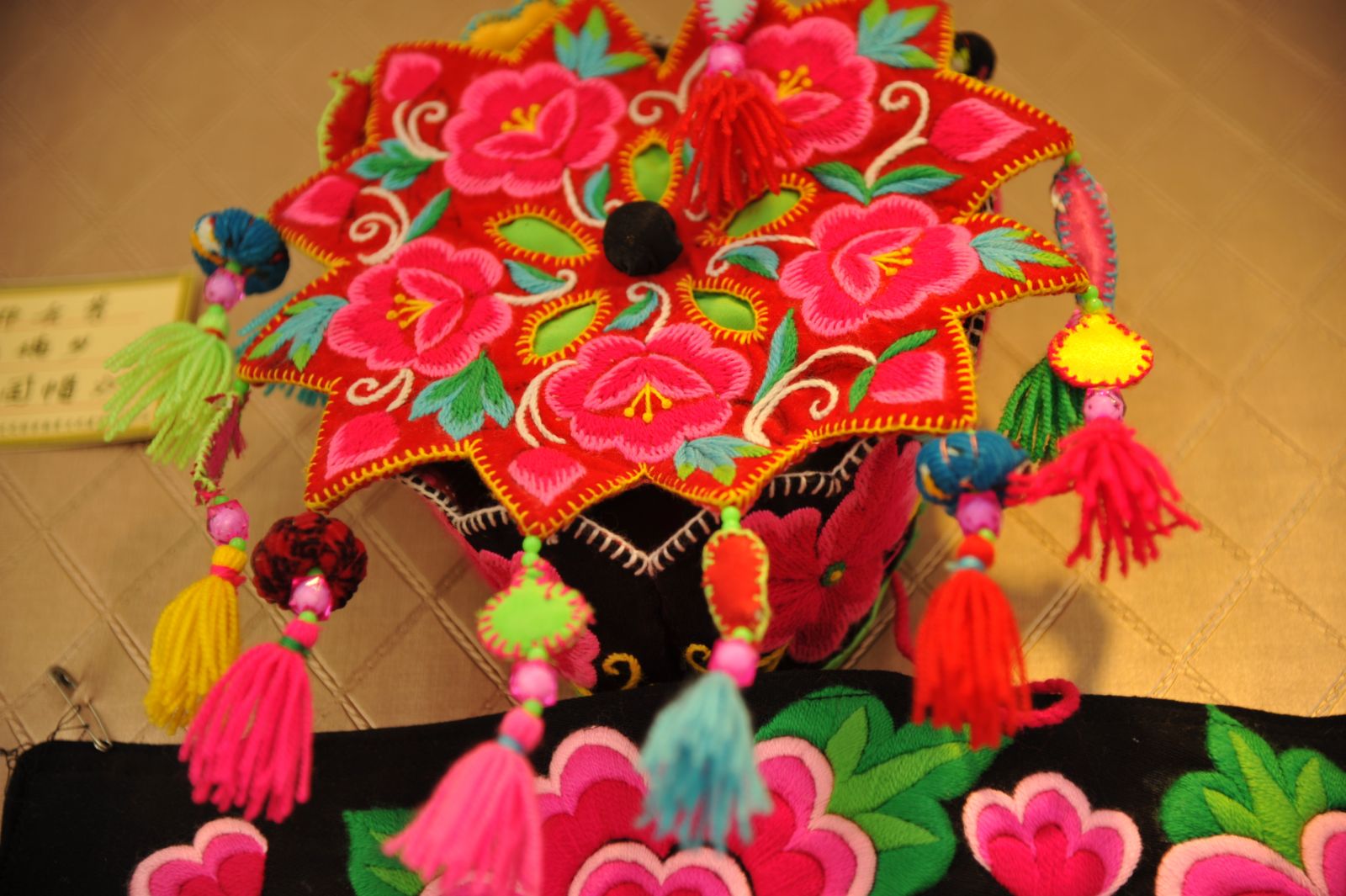
As the seventh largest one of the 56 ethnic groups of China, the Yi Minority mainly live in southwest China, with a population of over 9 million, of which about 8.71 million are distributed in the three provinces of mainland China, Yunnan, Sichuan and Guizhou, usually in rural areas. There are various branches of the Yi people, and the dialects and costumes are the main differences among them. Though the character is same and all written in the Yi script. It is a kind of logosyllabic character, also defined as syllabary by some scholars, among which more than 1,000 ones are commonly used. Moreover, many Yi people know the standard Chinese characters and also speak mandarin, so it is common to see a few signposts with both Yi and standard Chinese characters in the Yi Autonomous Prefecture (Liangshan, Sichuan). The culture and art of Yi have a long history with the help of their written language, including many valuable and precious documents covering a wide range of topics, including history, literature and medicine.
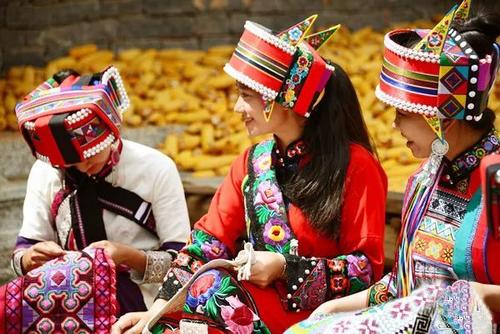
The Yi Minority is one of the oldest ethnic groups in China. Yi people have lived in southwest China since ancient times and have passed through different stages of human development and become the current Yi Minority. More than 2,000 years ago, the ancestors of the Yi people lived and reproduced on the Yunnan-Guizhou Plateau, the vicinity of Jinsha River and Lancang River. It is no wonder that Yi people also have legends related to floods like the creation myths of different cultures in the world. Apu Dumu, the savior, is deemed as the one who protected the Yi people during the flood. And the current Yi people in all parts of southwest China also share this common legend and believe that he is the common ancestors of all of them. Moreover, a lot of Yi script documents did record Dumu’s activities. Besides this hero’s activities, the Yi legend also shows that there were 12 different periods in ancient times, and 11 of which were matriarchal societies.
Around the fifth century BC, due to the migration and intermarriage of the various tribes of Yi people, “YI” became an ethnic common name, and subsequent Chinese documents began to use this as the name for the Yi people in southwest China. During the Han Dynasty, a group of Yi ancestors, under the name of “Kunming” (sharing the same pronunciation with the capital city of current Yunnan Province), engaged in agriculture or lived a nomadic life in the area centered on Erhai Lake, Yunnan. Since then, the Yi people have been involved in the history of central China. During this long development, the Yi people have gone through primitive society and slave society. During the 8th and 9th centuries, the establishment of the Nanzhao Kingdom marked the highest level of slavery in the history of the Yi people.
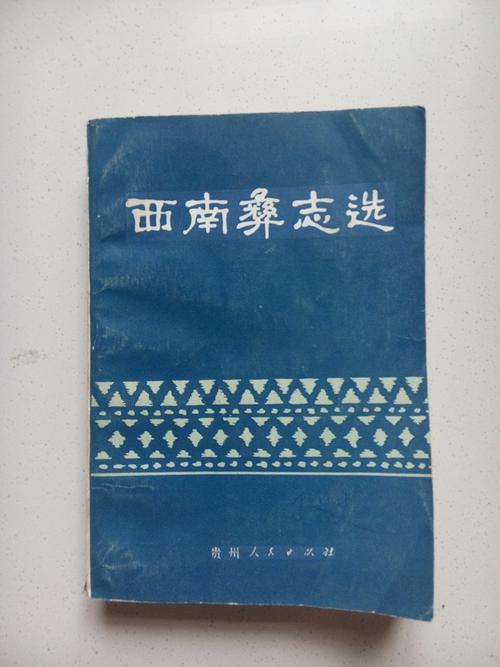
The Yi script has a long history. According to the records, it could date back to at least the 13th century. There are enormous Yi documents written in their own language, which involved philosophy, history, religion, literature and many other aspects. Among them, Yi Ethnic Gazetteer《西南彝志》describes the history and customs of the Yi people, and is known as the encyclopedia of the Yi people. The epic Mege《梅葛》depicts the ancestors strange and colorful pioneering process. The long narrative poem Ashima《阿诗玛》describes the love story of the young lad and girl of the Yi group. The poem reflects the Yi people’s pursuit of happiness without the fear of violence.
The Yi people are also keen on singing and dancing. There are many historical documents from different periods that have recorded the singing and dancing activities of the Yi people. And it has also become an important carrier of cultural exchanges between the Yi people and the Han People. The Yi people all like to sing, no matter how old they are. Singing is also required in various ceremonies, no matter it is a festival, wedding or funeral. They are good at expressing friendship with singing and playing music, and use their own poetry as a tool of self-entertainment and self-education. Their own ethnic history and life experience are all preserved and spread by their own poetry.
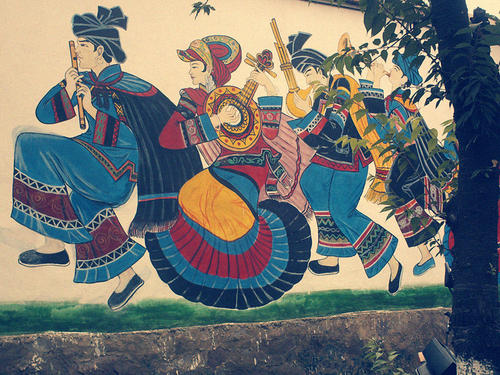
Some of China’s ethnic groups inhabit vast areas, while others live in an individual compact community in small areas or live in a mixture with Han People or other minorities. The Yi people mainly live in southwest China, with a few in Southeast Asia such as Vietnam and Laos. The Yi Minority in China is mainly distributed in the three provinces of Yunnan, Sichuan and Guizhou, with a few distributed in Guangxi, and some are also scattered around the rest of the provinces and counties. The Yi people mainly inhabit three autonomous prefectures, two of which are in Yunnan and one in Sichuan. The Yi people are the largest one among the minority groups in Yunnan and Sichuan, and 60.59% of the Yi people live in Yunnan Province. Outside mainland China, the Yi people in Vietnam is distributed in the provinces of Hà Giang, Cao Bằng. There are also nearly one million Yi people in Myanmar, Laos, Thailand and other places.
The southwest China where the Yi people are distributed in the mountainous region around the edge of Yunnan-Guizhou Plateau and the Qinghai-Tibet Plateau. There are lofty peaks, rivers flowing through the deep valleys, diverse climate types, and rich sources. Mountainous and semi-mountainous, as well as some plains and basins are the main areas where the Yi people live. Due to the mountains, rivers and deep mountain gorges, the terrain and natural conditions here are extremely complicated. Most areas are mountainous or semi-mountainous or hills and valleys, and others are 3,000 meters (around 9,842 ft) above sea level, which are alpine environments.

The temperature and rainfall vary from region to region. The alpine area has a cool climate, and the mountainous and semi-mountainous area has a mild climate with moderate rainfall. Some river valleys are hot and humid with the subtropical zone. The various climate types provide such unique natural conditions for the development of agriculture, forestry and animal husbandry. Thanks to the topography and climate, the vast areas of the Yi people are rich in animals, plants, water conservancy and mineral resources. Therefore, countless domestic and foreign tourists are attracted by the unique ethnic customs and natural landscapes.

The religious beliefs of the Yi people and their ancestors have gone through the process of transition and development from primitive religion’s totem worship, nature worship, ancestor worship to hero worship. The worship of tiger, water, fire and ancestors, as well as the rituals and myths of primitive religions, such as hero worship, ghost worship and spiritual worship, are still preserved in the Yi society. The records of numerous Yi scriptures, and many customs manifested in production and life, more or less, reflect the original religious content of the ancestors of the Yi people. For example, a tiger dance is still performed at some places demonstrating the story of the Yi people and their worship of tigers.
Every ancient ethnic group has its own totem. The Han People regard the Chinese dragon as their totem, while the Yi people in the mountains of southwest China worship tiger. Many mysterious legends about tigers are almost as old as the history of the Yi people. The following story is a prime example. It is said that in ancient times, floods flew through the earth. After the disaster, there were only seven females left in the whole world. When the seven sisters grew up, they gave birth to nine boys and four girls with a tiger, because no man was left in the entire world, which is believed as the origin of the Yi people. They all definitely treat themselves as the descendants of the tiger.
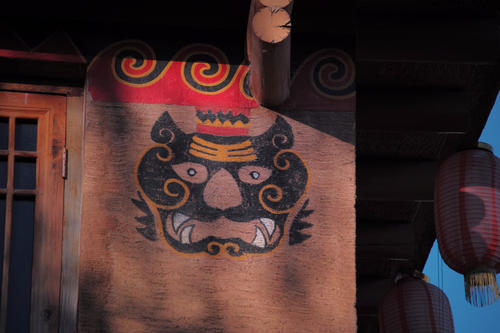
In the current life of the Yi people, you can see tiger totems everywhere. In some suburbs of Yunnan, a small stone tiger statue, measuring to be the size of a small cat, exists in the place where this family’s ancestors are worshiped. Moreover, the tiger totem also makes the image of the tiger ubiquitous in the normal life of the Yi people through its influence on the cultural psychology of the Yi people. The Yi people love the three colors of black, red and yellow, all of which are related to the tiger skin. After the Yi children were born, they all wore hats, clothes and shoes decorated with tiger-head patterns, because they believe that the tiger has some mysterious power to protect them.
Alcohol plays an important role in the daily life of the Yi people. In the Yi families, whenever a guest comes, they will only offer the guest an alcohol drink instead of tea. During drinking, whether you are a stranger or an acquaintance, they will sit together with you on the floor, and pass you the glass to drink in turns. During the holidays, each family will place a jar of home-brewed alcohol in front of their door, and everyone who passes by will be invited to have a drink.
In the process of adapting to nature and rationally transforming it, many distinctive architectural styles have formed. The decoration is major concern of the Yi people about their residential buildings. The entrance and the eaves are the focus of decoration, and various arch designs are often made on the gate. The lintel is usually carved with patterns of sun, moon, birds and beasts for decoration. The adobe door sill in the room is also carved with many patterns, such as monsters, birds, flowers and trees. The wooden doors and windows are also decorated with different patterns. All these decorations reflect the aesthetic taste of the Yi people. It is also worth mentioning that the Three Pagodas of Dali were built by them about 1,000 years ago.
The Yi people have many traditional ethnic festivals. According to the functions, the Yi people’s traditional festivals can be divided into five categories: sacrificing to the gods and ancestors, celebrating good harvest, commemorating heroes, entertainment, and so on. Among them, the Torch Festival is the most popular and grand festival of the Yi people.
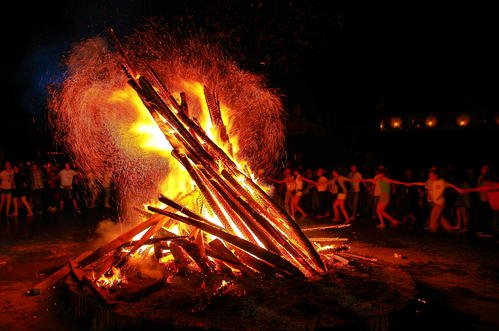
The Torch Festival, also named Fire Festival, is celebrated on the 24th day of the sixth month of the China Lunar Calendar, which is almost August in Gregorian calendar. This festival has its origin in a legend that a hero, with the help of a pine torch, protected the crops from a locust plague. During the Torch Festival, you can enjoy a series of activities, including wrestling, dancing shows, horse racing and even a beauty contest.
The Yi girls will hold a coming of age ceremony when they reach the age of 15 or 17. During this ceremony, they will change their red-and-white skirts to black-and-blue dresses. Only when the ceremony is finished can they be allowed to date a lad and get married.
Some Yi areas still remain the traditional wedding custom to “kidnap” the bride. Actually, it is a kind of joke accepted by both the groom and bride. It is a form of marriage approved by their parents and matchmakers. After the groom’s family offers betrothal gifts to the bride’s family, the bride will have to be kidnapped “forcibly”. At this time, the bride’s family members will pretend to hinder this progress by hitting the groom gently. In fact, both location and time are arranged and agreed in advance. The groom bringing the bride home means the marriage is officially established. The Yi people say that it has been passed down from generation to generation for thousands of years, and it shows respect to the bride, indicating the girl is attractive.
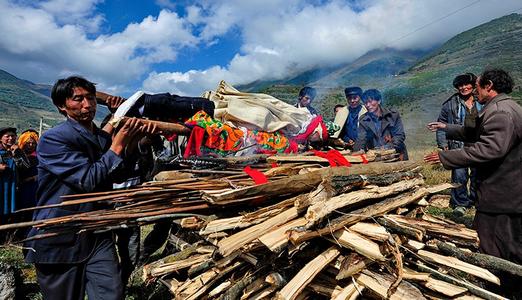
The Yi people have a long history of cremation. They believe that fire is holy and has the purifying function, and it is able to clear harmful substance that threatens people’s life. The Yi people think that souls can only be reunited with their ancestors after being purified by fire. Once one Yi people died, the body will be washed first, then put on a shroud, and finally, a little silver will put in his or her mouth. After relatives’ condolences, the body will be kept at home for 3, 5 or 7 days. After that, the body will be cremated with fire, and the ashes will be buried into the earth and covered with stones. The Yi people assume that after death the soul will ascend to heaven through the fire purifying, thereby achieving immortality, so as to get rid of the fear of death.
There are many different styles of folk songs and dances of the Yi people. As an old saying goes, the stars in the sky are countable, while the Yi people’s songs and dances are countless. The Yi people are good at singing and dancing. It is rich in folk songs, dances and music. During festivals, weddings or funerals, they will express their emotions through singing and dancing, which are the important parts of the Yi people’s spiritual culture.
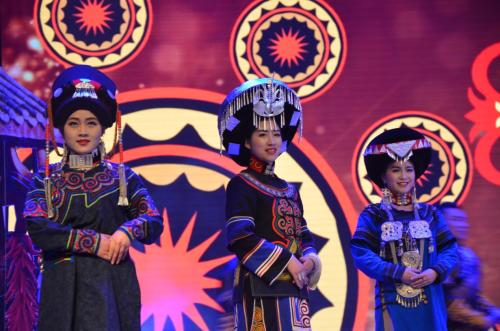
The lyrics of the Yi folk songs are extensive, which are one of the important sources of the Yi folk literature. In the traditional Yi society, singing is often used to preach history, emphasize morality, inherit customs, and express happiness, anger, joy and sorrow. The voice, varying according to the content of lyrics, is very artistic. The Yi people also have a wide variety of musical instruments, including stringed and percussion instruments. When tourists think back to their experiences in Yi area, their minds will be full of the sounds of the Yi folk songs.
The Yi people’s dance has various forms and is rich in ethnic style. A mass dance known as “Tage” is similar to tap dance. Everyone gathers around a bonfire, singing and dancing. The leader plays music, and the others dance hand in hand. The dance moves are vigorous and the steps are acting in unison.
There are still many native villages isolated in remote rugged mountainous areas, where the native people still remain their traditional lifestyles. You will enjoy the authentic Yi life there, by tasting local food, enjoying native music and even dancing with local people. Yet, it is also difficult to reach there alone because of the inconvenient transportation. Therefore, we highly recommended you should find a professional guide with enough understanding of local conditions and a reliable driver who is familiar with local roads.
We can provide all the above staff as well as the accommodation for you to help you enjoy a wonderful and comfortable trip to Yi areas.
